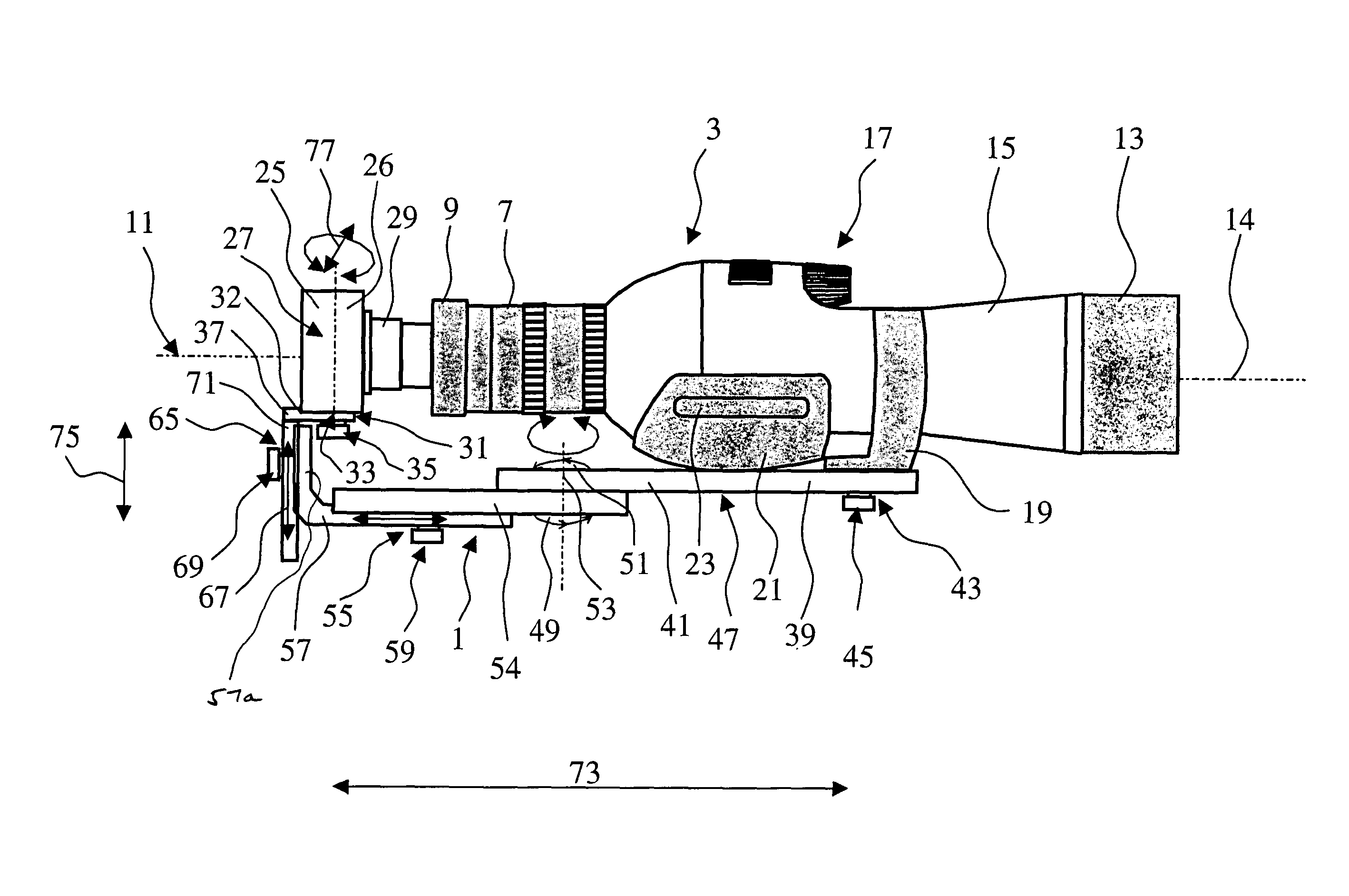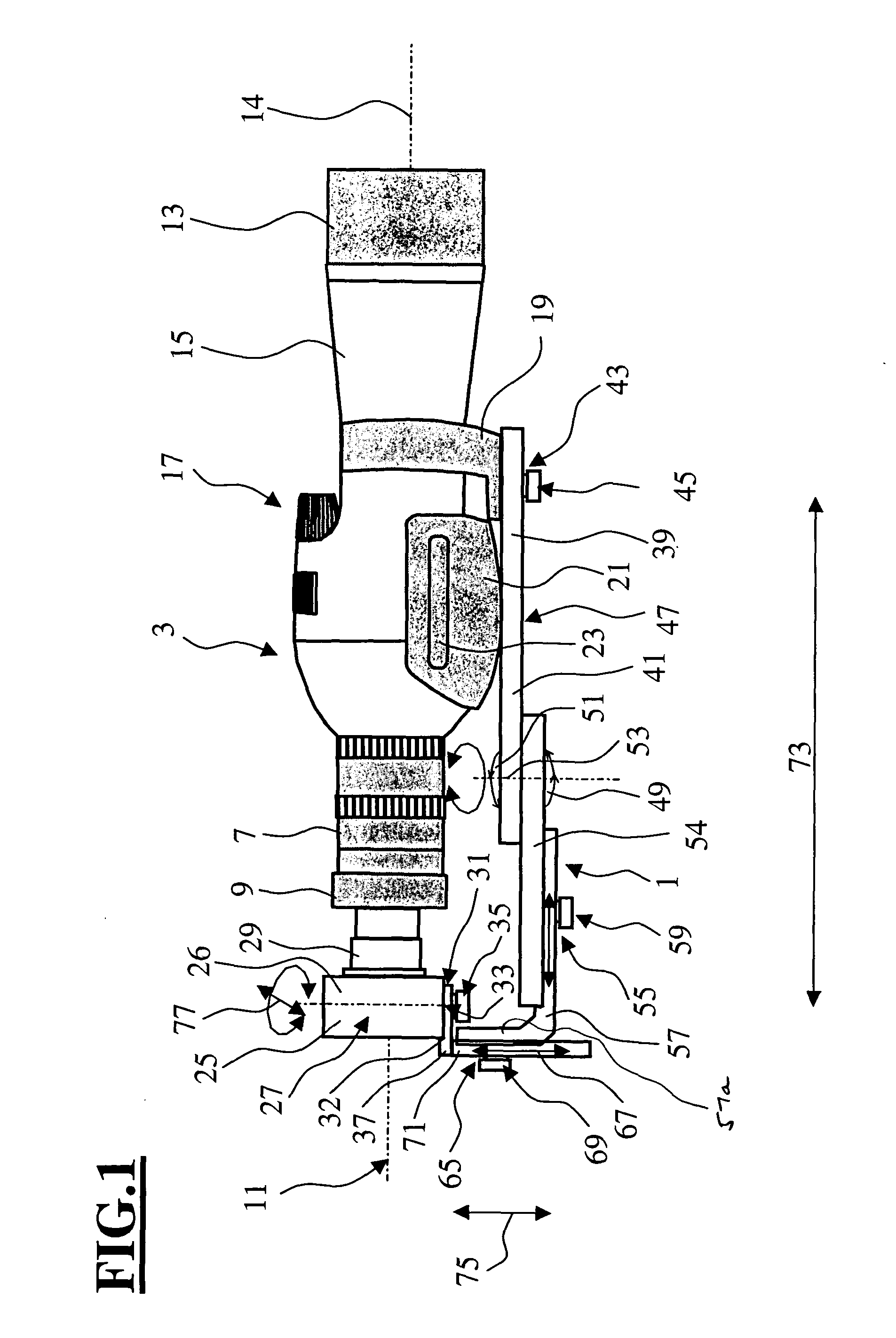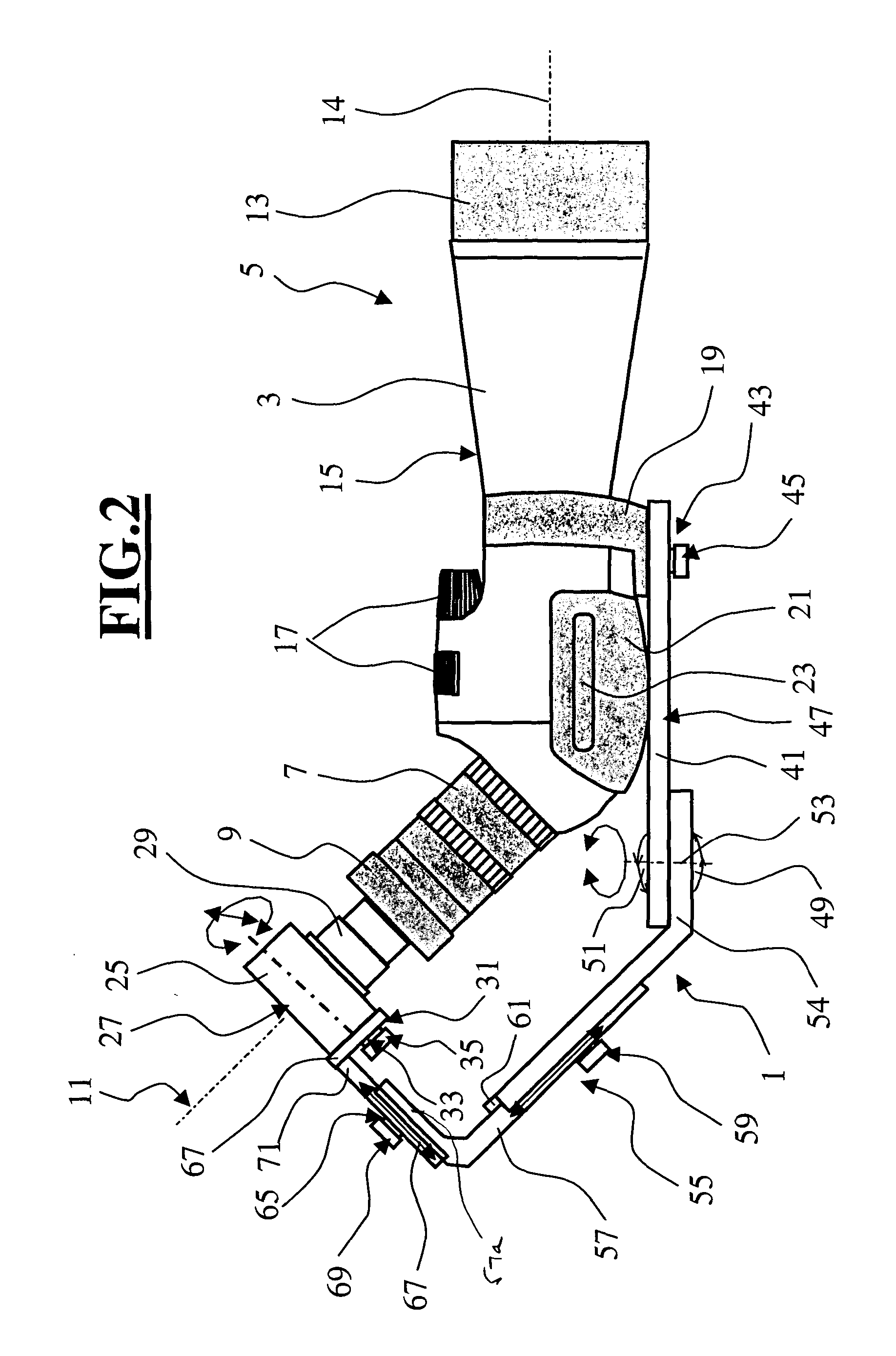Arrangement for holding a camera behind a monocular or binocular
- Summary
- Abstract
- Description
- Claims
- Application Information
AI Technical Summary
Benefits of technology
Problems solved by technology
Method used
Image
Examples
Embodiment Construction
[0025] The glass 3 shown in FIG. 1 is a monocular and includes an ocular 7, an objective 13 and a housing 15. Furthermore, the monocular 3 has a focus drive 17. A grasping region 21 having grasping recesses 23 is arranged in the lower region of the monocular 3. The grasping recesses are preferably made of a rubber-like material. Furthermore, the monocular 3 includes an attachment element 19 for a stand or tripod. It is understood that the arrangement of FIG. 1 could be used also with a glass in form of a binocular.
[0026] The optics of the objective fix an optical axis 14 of the objective 13 and an optical axis 11 of the ocular 7 is fixed by the optical elements of the ocular 7. With the monocular 3 having linear viewing, the optical axes (11, 14) of the ocular 7 and objective 13 are coincident.
[0027] A base 39 is tightly connected to the attachment element 19 for a stand or tripod via an attachment device 43. In the embodiment shown, the base 39 is configured in the form of a base...
PUM
 Login to View More
Login to View More Abstract
Description
Claims
Application Information
 Login to View More
Login to View More - R&D
- Intellectual Property
- Life Sciences
- Materials
- Tech Scout
- Unparalleled Data Quality
- Higher Quality Content
- 60% Fewer Hallucinations
Browse by: Latest US Patents, China's latest patents, Technical Efficacy Thesaurus, Application Domain, Technology Topic, Popular Technical Reports.
© 2025 PatSnap. All rights reserved.Legal|Privacy policy|Modern Slavery Act Transparency Statement|Sitemap|About US| Contact US: help@patsnap.com



